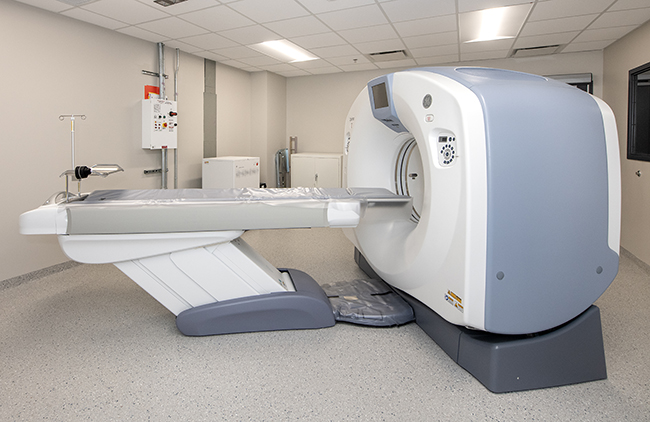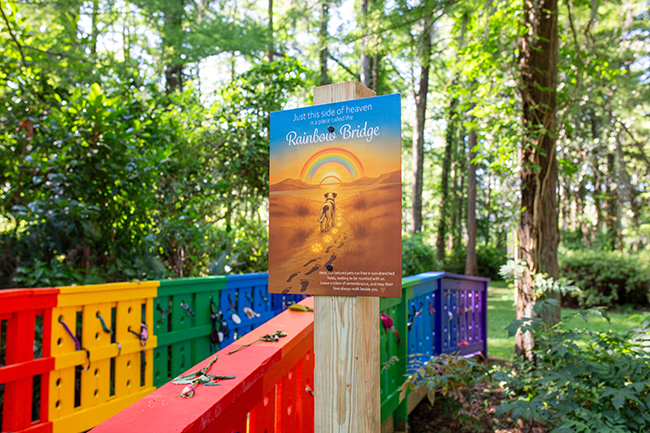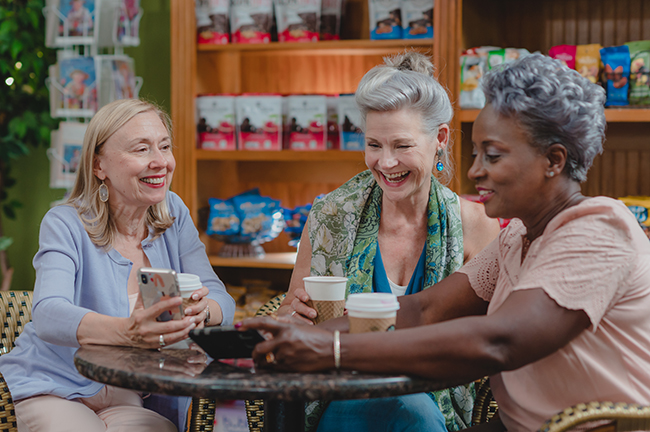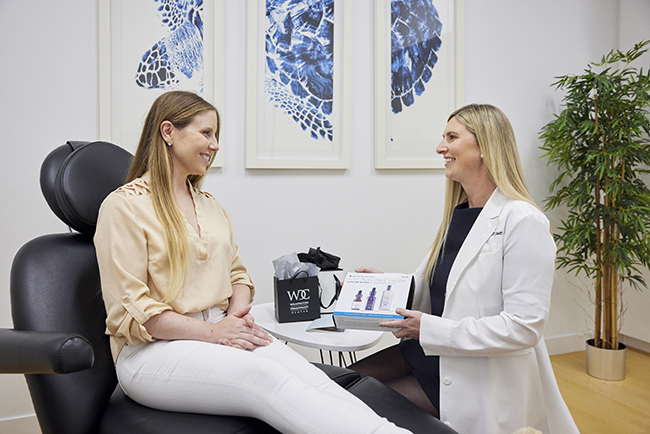The Heart of the Matter
05 Jan 2018
Dr. John Rommel, of Cape Fear Heart Associates, gifts a second chance at life with an expert knowledge of specialty treatment
By EMILY GORMAN FANCY
Photos by KELLY STARBUCK PHOTOGRAPHY
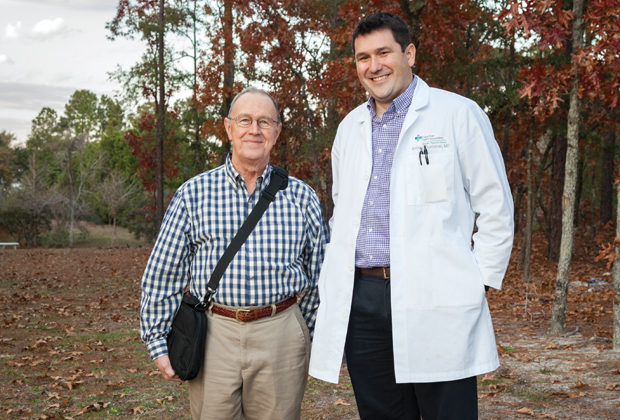
When Steve Byrd became a patient of Dr. John Rommel at Cape Fear Heart Associates, he had exhausted most of the cardiology treatments available yet was still experiencing shortness of breath, discomfort, insomnia, and a lack of energy. Dr. Rommel advised him to undergo left ventricle assist device (LVAD) implantation surgery, which Byrd credits with not only saving his life, but dramatically improving his quality of life.
A resident of the Wilmington area since 1974, Byrd’s heart now operates with a surgically implanted mechanical pump, the Heartmate III LVAD. Approved by the FDA, the LVAD works with the heart to help it pump more blood throughout the body, relieving congestive heart failure symptoms.
Byrd’s congestive heart failure symptoms go back to 2007, when he first experienced shortness of breath and difficulty going up stairs. In June 2007, he underwent surgery to replace an aortic valve. Following this surgery, Byrd enjoyed several years of good health and renewed energy. This lasted until April 2016, when Byrd says his symptoms, again including shortness of breath and also an inability to walk up steps, returned “practically overnight.”
Doctors told him the valve that had been replaced was now beginning to stick, so he underwent another open-heart surgery to repair the valve. After this procedure, Byrd gained more than 25 pounds of fluid weight because his heart could not pump a sufficient amount of blood. After numerous hospital stays to treat this problem, Byrd turned to Dr. Rommel, whom he credits with turning his health around.
“Dr. Rommel said to me, ‘Mr. Byrd, you don’t want to hear this, but you’re going back across the street to the hospital, but I will get the fluid off of you,’” he says. True to his word, Dr. Rommel helped Byrd lose the fluid weight, and he felt better for a while.
However, Dr. Rommel advised that this was not a long-term solution. Due to Byrd’s advanced congestive heart failure, his heart could not handle the fluid. His blood flow had gotten so low that in addition to a lack of energy, he also could not taste food, as there was not enough blood flow to his stomach.
Dr. Rommel recommended an LVAD as Byrd’s best solution as he met all of the qualifications, including strong kidney and lung function, the ability to go on blood thinners, and a supportive family.
Upon his first visit to the Duke Cardiac Transplant Clinic for LVAD consultation, Byrd says that he immediately felt comfortable. In February 2017, Dr. Milano of Duke performed Byrd’s LVAD surgery.
“If it wasn’t for him (Dr. Rommel) and God, Steve would not be here,” says Janice Byrd, wife of Steve Byrd. “He is the only person who knew what to do for Steve’s fluid.”
Dr. Rommel came to Cape Fear Heart Associates on August 1, 2016 specializing in the treatment of acute and chronic congestive heart failure through medication, mechanical circulatory support, and cardiac transplantation. He completed a fellowship in cardiovascular disease and advanced heart failure and transplant cardiology at UNC Hospitals.
When asked why he chose this specialization, Dr. Rommel explains, “I think heart failure allows you to handle all aspects of patient care and critical care as well as years of getting to know someone. It’s sad to watch someone get sicker, but it’s amazing to watch them get better, to get a second chance at life essentially through one of these therapies.”
According to MyLVAD.com, an LVAD implant involves an internal pump that “sits on or next to your heart’s left ventricle with a tube attached that routes the blood to your aorta.” A cable called a driveline extends from the pump outside the body, connecting the device to a controller and power sources worn outside the body.
Byrd wears a portable carrier that holds multiple batteries and an extra controller. The LVAD runs off batteries during the day, and when he sleeps, the pump is plugged in to electricity. Because of the needs of his LVAD, the Byrds must have electricity at all times, so Duke Power is aware of his patient status in the event of an outage.
Upon first receiving his device, Byrd had to learn a new way to do many simple every day movements, such as putting on socks, shoes, and pants. To help meet Byrd’s medical needs after surgery, Janice underwent training in the intricacies of caring for someone with an LVAD. “After you leave the hospital, a good caregiver is the most important thing you can have,” Steve Byrd says.
As an LVAD patient, Byrd must be cognizant of sodium intake and other dietary restrictions. He cannot eat Vitamin K-rich foods, such as spinach, collards, broccoli, and other greens, because of how they interact with his blood thinner medication. He eats a high-protein, heart-healthy diet and maintains hydrated on about 80 ounces of no-sodium water each day. The Byrds have adjusted to Steve’s diet and continue to eat out regularly, opting for meals that are as low in sodium as possible.
After working for DuPont for 33 years, Byrd took early retirement in 1999. Janice jokes that the day he retired from the office, she “retired from the kitchen.” These days, Steve Byrd enjoys a great quality of life. He stays active by walking daily and helping out in the garden. While there are a few things he misses such as boating (LVAD patients must be careful around water to avoid submerging their device), he is grateful for his newfound energy and enjoys many of the activities that he did before.
“Steve’s stamina is up and he’s come a long way,” Janice says.
Throughout his cardiac treatment, Byrd says he spent a lot of time on the cardiology floor of New Hanover Regional Medical Center, which allowed him to get to know hospital staff well. “The nurses on the ninth floor are absolute angels,” he says. “One thing about the emergency room staff – they are really sensitive to the needs of people with heart problems.”
Byrd is grateful for the ways in which his LVAD has given him his life back. “If I had it to do again, I would do the exact same thing,” he says. “It’s amazing how much better I am now.”




